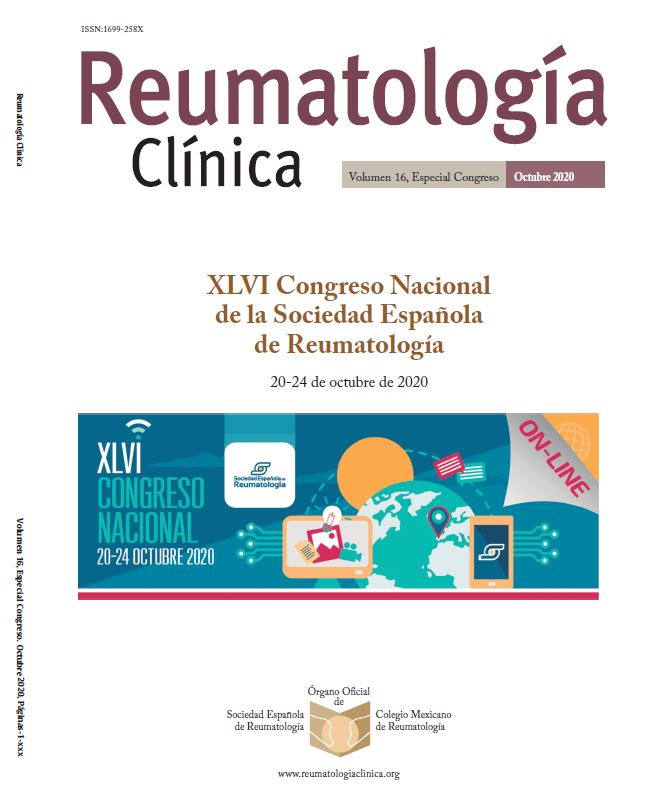P139 - SALIVARY GLAND ULTRASOUND IN CLINICAL PRACTICE
1Department of Rheumatology. Hospital General Universitario Gregorio Marañón. Madrid. 2Department of Rheumatology. Hospital Clínico de Valladolid.
Introduction: Salivary Gland Ultrasound (SGU) is a simple, fast, and well- tolerated examination, which provides information about glandular structure and has proven to be very useful in the Sjögren Syndrome (SS) diagnosis. A prognostic value has also been proposed due to its possible relationship with lymphomas and extra-glandular manifestations. The objective of our study is to evaluate ultrasound results in patients who went through an SGU in clinical practice, its usefulness in the diagnosis of Sjögren's syndrome and the presence of complications (lymphomas, extra-glandular manifestations or factors related to increased lymphoma risk).
Methods: We conducted a retrospective cross-sectional study with review of clinical records that included all those patients coded as SGU in the Ultrasound unit of Rheumatology Department from 2016 to December 2019. Information collected included final diagnosis, laboratory results, clinical manifestations and ultrasound results. We performed an analysis on the frequency of pathological SGU and on the relationship between this lesions in patients with final pSS diagnosis and the presence of lymphoma, extra-glandular manifestations and the laboratory values related with increased lymphoma risk (low complement levels, cryoglobulinemia, positive autoimmunity).
Results: SGU was performed in 171 patients in four years, 162 women (94.7%). The previous diagnoses, reason for the request and final diagnosis are shown in the table. The vast majority of the SGU were normal, only 28 (16.3%) were pathological, 13 with a grade II and 8 with a grade III. In the other 7 patients grading was not available. Of the 28 patients with pathological SGU, none had lymphoma, only 3 had recurrent parotiditis and 15 had had extra-glandular manifestations, mainly arthralgia/arthritis (12). Only 1 patient, with rheumatoid arthritis, had had a lymphoma and the SGU was normal. Antibody positivity was frequent in pathological SGU, 16/23 antinuclear antibodies, 13/22 anti-Ro and 9/23 rheumatoid factor. Of the 86 patients without previous diagnosis, 18 were diagnosed with Sjögren syndrome, 9 with pathological SGU and the rest were normal. No patient diagnosed with a dry non-autoimmune syndrome presented pathological SGU.
|
Previous diagnoses, reason for request and final diagnoses |
||
|
Previous diagnoses (n: 171) |
Reason for request (n: 171) |
Final diagnosis (n: 78) |
|
Without prior diagnosis (n: 86) |
Dry non- autoimmune syndrome (n: 127) |
Dry non-autoimmune syndrome (n: 60) |
|
Primary Sjögren's syndrome (n: 11) |
Primary Sjögren's syndrome (n: 12) |
Primary Sjögren's syndrome (n: 18) |
|
Systemic Lupus Erythematosus (n: 9) |
Lymphoma (n: 0) |
Secondary Sjögren's syndrome (n: 0) |
|
Rheumatoid arthritis (n: 24) |
Control (n: 13) |
Other diagnoses (n: 7) |
|
Other diagnoses (n: 18) |
Other reasons (n: 11) |
|
Conclusions: The impact of the SGU is low and its use cannot, for now, displace other methods (e.g. salivary gland biopsy) in the diagnosis of SS. Also our low number of patients with pathological SGU together with the low prevalence of the complications studied (e.g. lymphomas = 1) prevents the expected comparisons.







